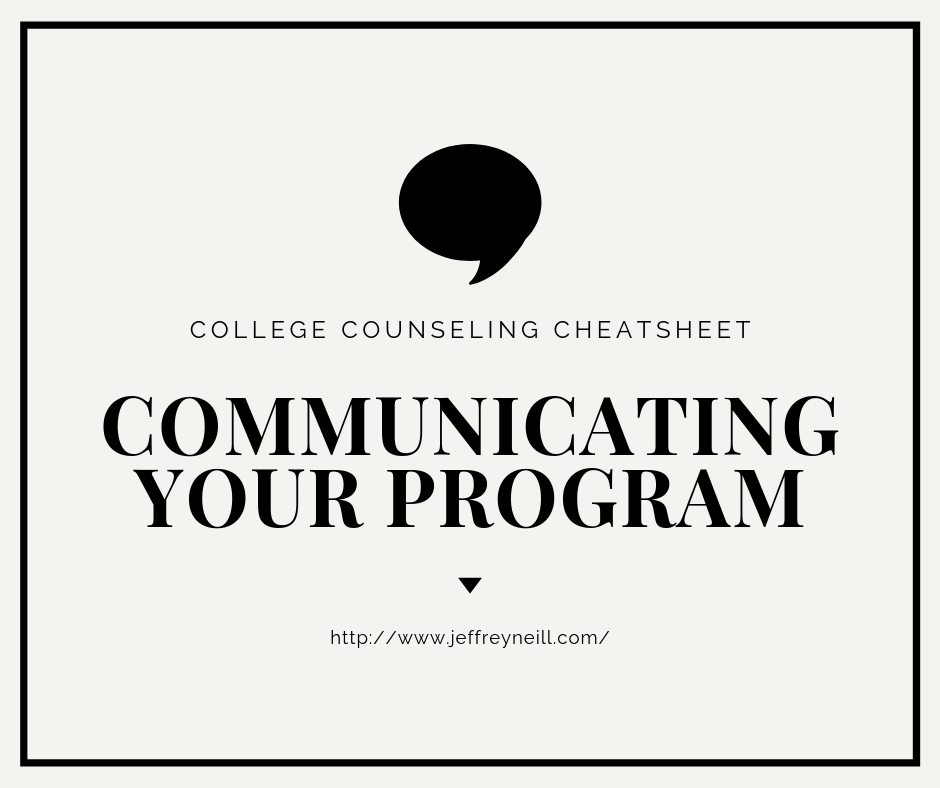As any student begins to contemplate attending university, he or she must confront the plethora of qualities and attributes of the universities out there. This is daunting. Of course, it is true that there are over 4,000 colleges and universities just in the United States, with some claims of there being over 25,000 world-wide. However, what makes any of them a “good fit” for a particular student? Arguably each is unique and different, so what might make one of them the right school for a student?
Most college counseling processes involve some deep reflection by the student. It is really important for students to take time to think about what is important to them in a college. As I have gone through my career in counseling students, I have encountered a host of criteria more regularly: a particular major, proximity to urban centers, distance from home, size of university, student to faculty ratio, affordability, etc. I would note that I have seen a growing number of other criteria as of late: the regional political disposition, job placement after graduation, the diversity of the student body, availability of internships, the academic support programs, merit-based scholarships, etc. And I have seen some unique criteria as well: a campus with an arboretum, minimal publishing requirements for faculty, a top-tier athletics program, the availability of a climbing wall, etc. This variety reflects the breadth and variety of the very different students with whom I have worked, all searching for a campus that fits them and their needs.
However, while I still think that it is absolutely essential for students to self-reflect and to learn all that they can about themselves in an effort to lead a better life, let alone to inform their college search process, I wish also to provide some additional scaffolding for identifying these important criteria based on some recent research. In 2014, The Gallup-Purdue Index, research on some 30,000 college graduates from the US, sought to explore the relevant college/university experiences of individuals who they deemed to have “great jobs” and/or leading “great lives.” The research is certainly worth taking the time to explore, especially when considering their definitions of success:
The Gallup-Purdue study found that college graduates who have achieved great jobs and great lives were more likely to be personally engaged with a faculty member, have participated in an internship, been involved in extracurricular activities and have graduated with manageable student debt. These findings held true regardless of the type of public or private non-profit, four-year institution, no matter whether highly or much less selective. It was the student experience and level of engagement that made the difference – not the rankings. (source)
So, in so many ways, but especially for young people still exploring the world around them and their place in it, there is wisdom in exploring those experiences that turn out to be most important to others who have found success at the other end of college. As such, perhaps we can find some angles through which to see the college search process with a more critical and informed eye.
One component of the research looks at those “successful” individuals who thought that their education was worth the cost. When examining this subset, there are a series of experiences that significantly increased the chances of an individual strongly agreeing that their college experiences was worth the cost:
In this way, doesn’t it then make some sense to, as I referenced before, use these criteria as a scaffolding to explore what criteria are of true significance in your college search?
Thankfully, Purdue-Gallup provide two documents that are terrifically helpful in the college search process. The first is entitled 6 Principles of Success and points to suggested behaviors for students in the search process as well as to points to consider when searching for colleges. The second, arguably the more important one and certainly the more helpful for our purposes here, is a College Planning Checklist, a listing of some essential questions to guide your research when exploring colleges. Again, while each college should yield its own relatively-unique answers to the questions, the students’ responses should be informed by some deep reflection and pursuit of a greater sense of self.
For example, large class sizes might mean for some that finding a mentor will be harder given the competition for professors’ attention, whereas for others, large class sizes might be the inevitable byproduct of pursuing a resource-intensive (expensive) major about which the student is passionate. Exploring these dynamics is at the very heart of the college search. It is never too early for a high school student to start thinking about these concepts!




















